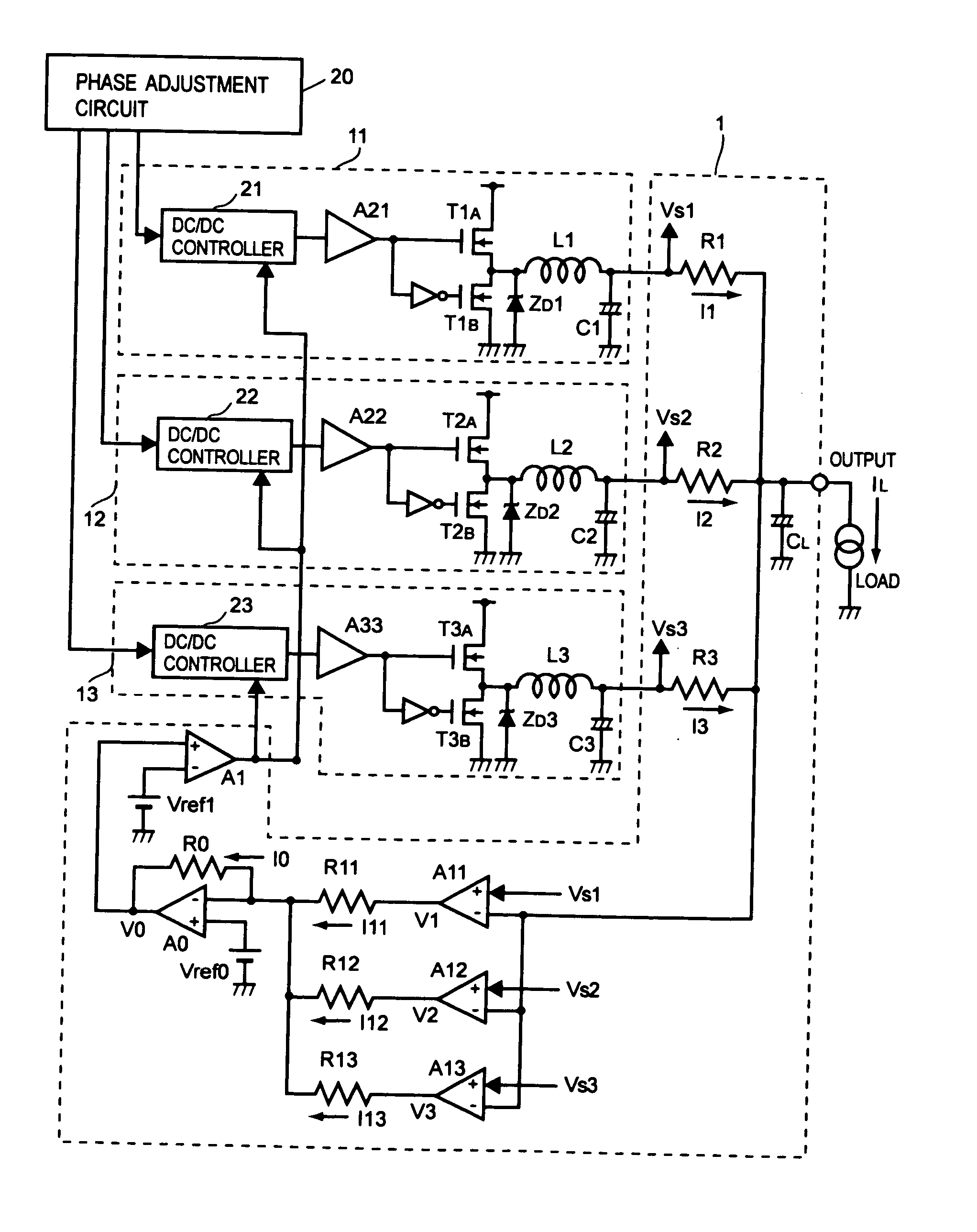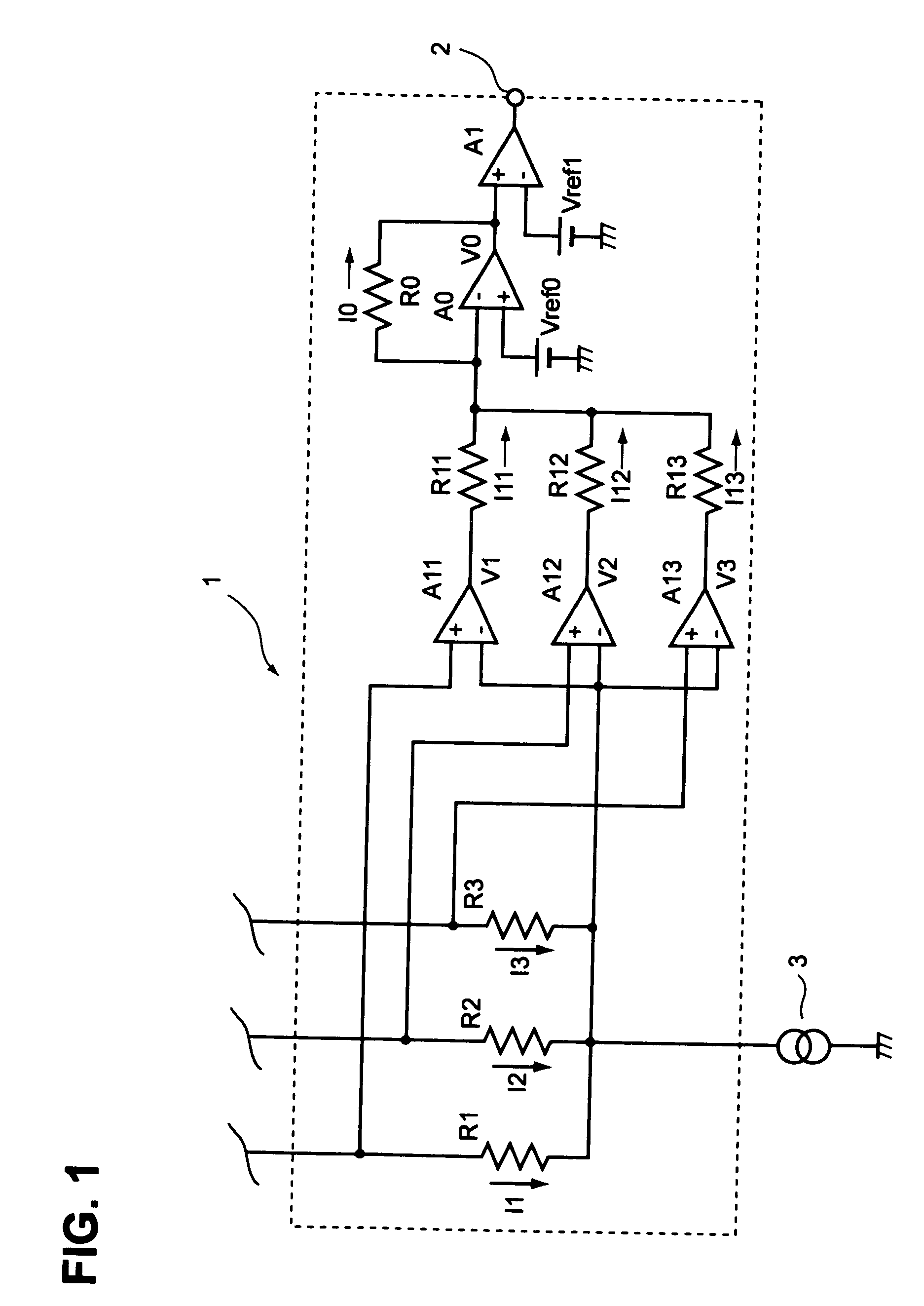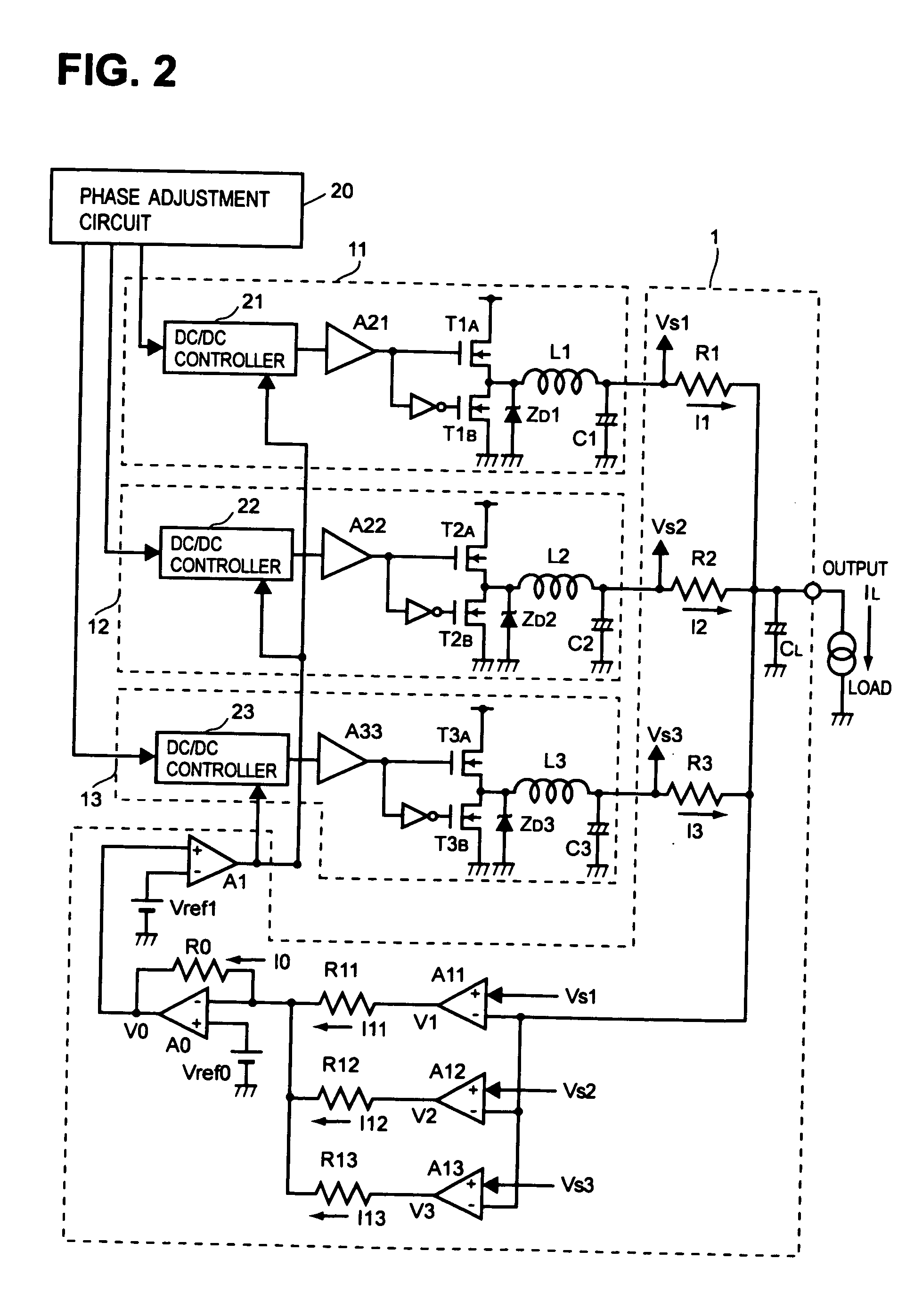DC/DC converter
a dc/dc converter and current limiter technology, applied in the direction of electric variable regulation, process and machine control, instruments, etc., can solve the problems of shortening the operating life of equipment such as personal computers, affecting the portability of equipment, and difficulty in a single dc/dc converter to supply large curren
- Summary
- Abstract
- Description
- Claims
- Application Information
AI Technical Summary
Benefits of technology
Problems solved by technology
Method used
Image
Examples
Embodiment Construction
[0021] Hereinafter, embodiments of the present invention will be described with reference to the drawings. FIG. 1 shows, as one embodiment of the invention, an overcurrent detection / prevention circuit for detecting the sum of load currents.
[0022] The overcurrent detection / prevention circuit 1 shown in FIG. 1 has current detection resistors R1, R2, and R3 connected respectively in the output paths of three unillustrated DC / DC converters, and the three output paths are connected, in parallel with one another, to a load 3. The terminal of the current detection resistor R1 opposite to the load is connected to the non-inverting input terminal (+) of an amplifier A11, the terminal of the current detection resistor R2 opposite to the load is connected to the non-inverting input terminal of an amplifier A12, and the terminal of the current detection resistor R3 opposite to the load is connected to the non-inverting input terminal of an amplifier A13. The node at which the current detection...
PUM
 Login to View More
Login to View More Abstract
Description
Claims
Application Information
 Login to View More
Login to View More - R&D
- Intellectual Property
- Life Sciences
- Materials
- Tech Scout
- Unparalleled Data Quality
- Higher Quality Content
- 60% Fewer Hallucinations
Browse by: Latest US Patents, China's latest patents, Technical Efficacy Thesaurus, Application Domain, Technology Topic, Popular Technical Reports.
© 2025 PatSnap. All rights reserved.Legal|Privacy policy|Modern Slavery Act Transparency Statement|Sitemap|About US| Contact US: help@patsnap.com



